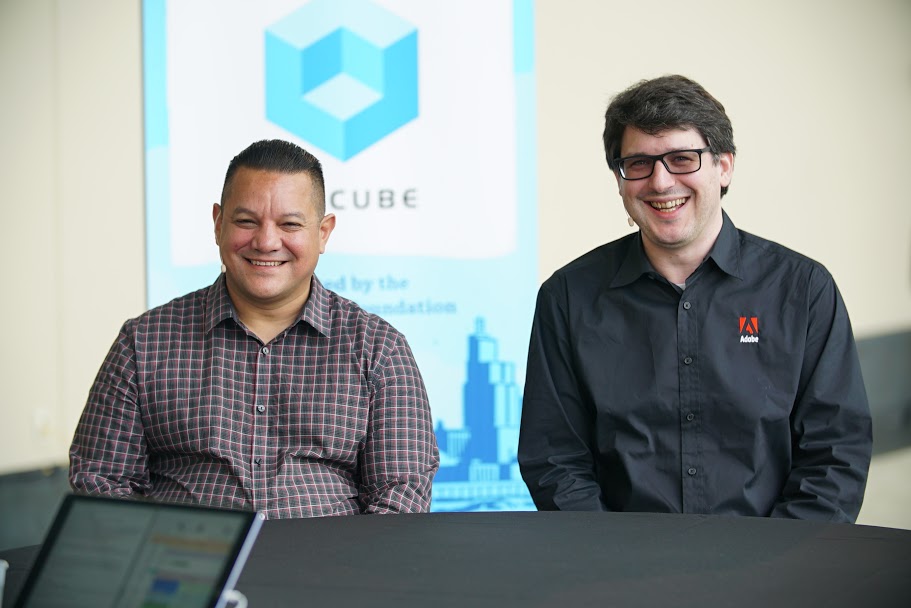 APPS
APPS
 APPS
APPS
 APPS
APPS
An OpenStack user having set up two deployments at organizations revealed a lesson learned: While there can be some complexity with setting up OpenStack’s open-source cloud computing software, it’s best to consume just the things that are needed within the environment. There should be a focus on being very lean about the application program interfaces an enterprise consumes and what services they think are meaningful to their business, according to Joseph Sandoval (pictured, left), cloud platform manager at Adobe Systems Inc.
“Instead of taking all ‘as a service type’ parts of this framework, we really narrowed it down to what matched our business requirements,” Sandoval said.
Sandoval and Nicolas Brousse (pictured, right), director of operations engineering at Adobe System, spoke with host Stu Miniman (@stu) and guest host John Troyer (@jtroyer) of theCUBE, SiliconANGLE Media’s mobile livestreaming studio, during this year’s OpenStack Summit in Boston, Massachusetts. In addition to reasons why staying lean is a good idea, they also discussed why enterprises need to have a cloud mindset. (* Disclosure below.)
One thing that Sandoval thinks many enterprises overlook when they try to lift and shift in a race to a public cloud is that they can still be challenged because they haven’t fundamentally changed how they are consuming the cloud product. Enterprises must learn to make themselves “cloud-native.” He realized the issue is almost bigger than OpenStack itself.
“It’s almost like how, as a business, you operate and how your teams fundamentally build their tools and how they make open source a true strategy,” Sandoval said.
Brousse explained that their team at Adobe is focused on the customer, and the end goal of what they are trying to build is not necessarily driven by the technology itself; instead, they try to devise technology to solve a problem.
“For us, every time we go to an event or technology [conference], we [ask ourselves], ‘What are we trying to solve?’ And that’s what drives most of our discussions,” Brousse stated.
Watch the complete video interview below, and be sure to check out more of SiliconANGLE’s and theCUBE’s coverage of OpenStack Summit 2017 Boston. (* Disclosure: The OpenStack Foundation sponsors some OpenStack Summit segments on SiliconANGLE Media’s theCUBE. Neither the OpenStack Foundation nor other sponsors have editorial control over content on theCUBE or SiliconANGLE.)
Support our mission to keep content open and free by engaging with theCUBE community. Join theCUBE’s Alumni Trust Network, where technology leaders connect, share intelligence and create opportunities.
Founded by tech visionaries John Furrier and Dave Vellante, SiliconANGLE Media has built a dynamic ecosystem of industry-leading digital media brands that reach 15+ million elite tech professionals. Our new proprietary theCUBE AI Video Cloud is breaking ground in audience interaction, leveraging theCUBEai.com neural network to help technology companies make data-driven decisions and stay at the forefront of industry conversations.